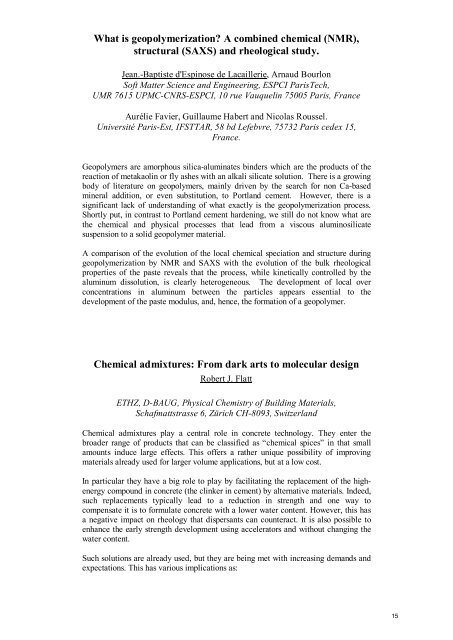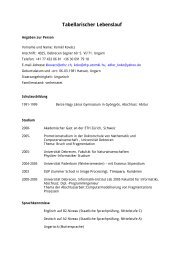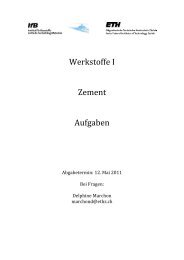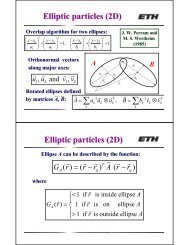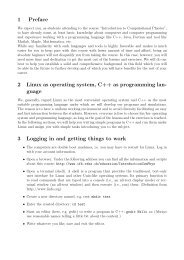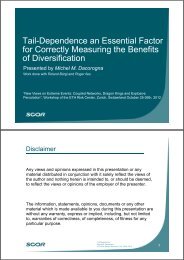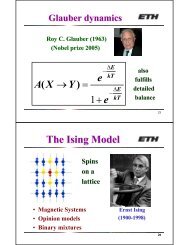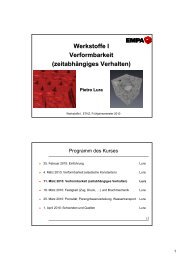Here - Institute for Building Materials - ETH Zürich
Here - Institute for Building Materials - ETH Zürich
Here - Institute for Building Materials - ETH Zürich
You also want an ePaper? Increase the reach of your titles
YUMPU automatically turns print PDFs into web optimized ePapers that Google loves.
What is geopolymerization? A combined chemical (NMR),structural (SAXS) and rheological study.Jean.-Baptiste d'Espinose de Lacaillerie, Arnaud BourlonSoft Matter Science and Engineering, ESPCI ParisTech,UMR 7615 UPMC-CNRS-ESPCI, 10 rue Vauquelin 75005 Paris, FranceAurélie Favier, Guillaume Habert and Nicolas Roussel.Université Paris-Est, IFSTTAR, 58 bd Lefebvre, 75732 Paris cedex 15,France.Geopolymers are amorphous silica-aluminates binders which are the products of thereaction of metakaolin or fly ashes with an alkali silicate solution. There is a growingbody of literature on geopolymers, mainly driven by the search <strong>for</strong> non Ca-basedmineral addition, or even substitution, to Portland cement. However, there is asignificant lack of understanding of what exactly is the geopolymerization process.Shortly put, in contrast to Portland cement hardening, we still do not know what arethe chemical and physical processes that lead from a viscous aluminosilicatesuspension to a solid geopolymer material.A comparison of the evolution of the local chemical speciation and structure duringgeopolymerization by NMR and SAXS with the evolution of the bulk rheologicalproperties of the paste reveals that the process, while kinetically controlled by thealuminum dissolution, is clearly heterogeneous. The development of local overconcentrations in aluminum between the particles appears essential to thedevelopment of the paste modulus, and, hence, the <strong>for</strong>mation of a geopolymer.Chemical admixtures: From dark arts to molecular designRobert J. Flatt<strong>ETH</strong>Z, D-BAUG, Physical Chemistry of <strong>Building</strong> <strong>Materials</strong>,Schafmattstrasse 6, Zürich CH-8093, SwitzerlandChemical admixtures play a central role in concrete technology. They enter thebroader range of products that can be classified as “chemical spices” in that smallamounts induce large effects. This offers a rather unique possibility of improvingmaterials already used <strong>for</strong> larger volume applications, but at a low cost.In particular they have a big role to play by facilitating the replacement of the highenergycompound in concrete (the clinker in cement) by alternative materials. Indeed,such replacements typically lead to a reduction in strength and one way tocompensate it is to <strong>for</strong>mulate concrete with a lower water content. However, this hasa negative impact on rheology that dispersants can counteract. It is also possible toenhance the early strength development using accelerators and without changing thewater content.Such solutions are already used, but they are being met with increasing demands andexpectations. This has various implications as:15


